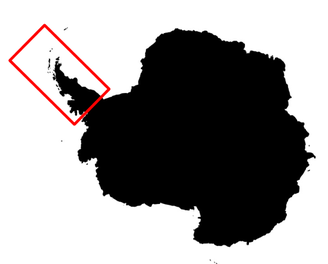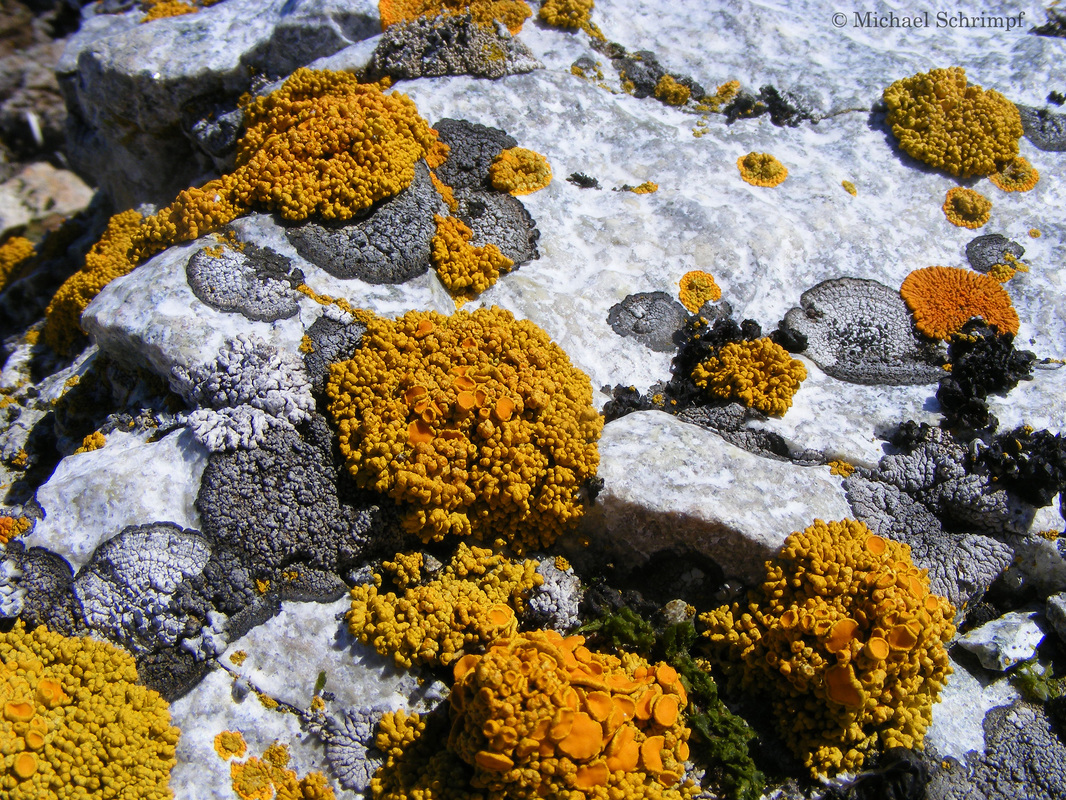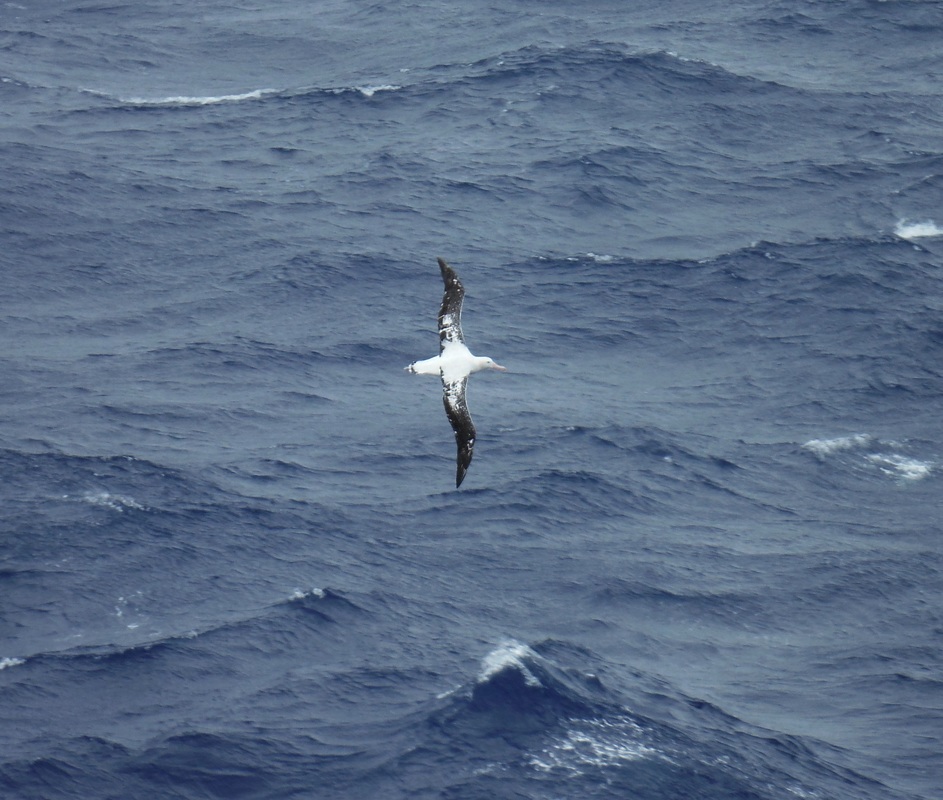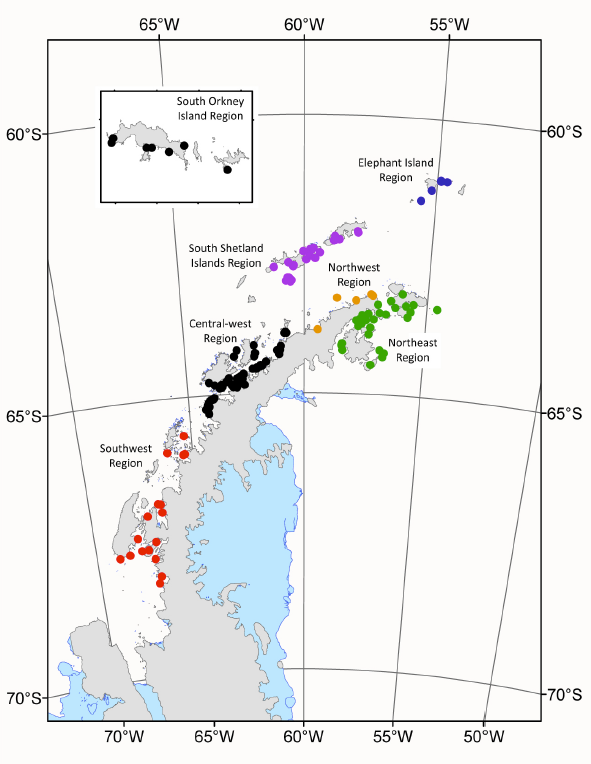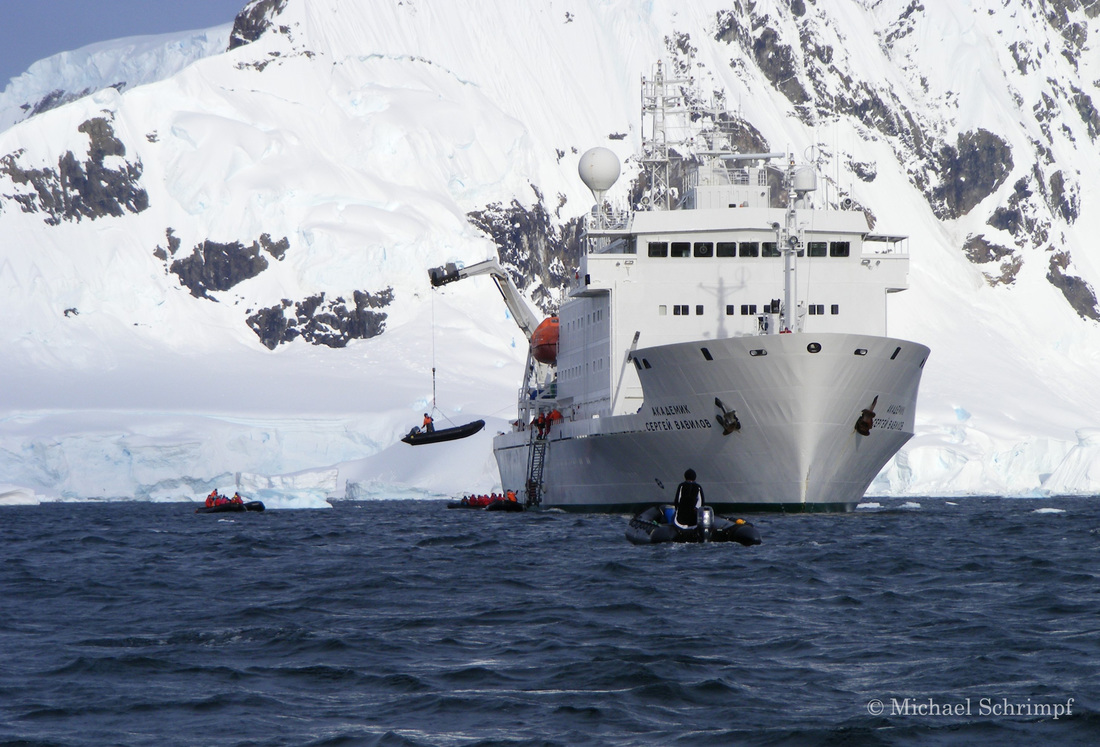|
Much of my research is focused on the Antarctic Peninsula, which I visit during the austral summer (Dec-Feb). It is a rugged and mountainous region, with lots of bays, fjords, and islands. Much of the land is glaciated, and during the winter months (May-Aug) much of the sea is covered with seasonal sea ice.
Explore the peninsula at home via the Antarctic Environments Portal.
The ocean is teeming with life, including billions of Antarctic krill (Euphausia superba), which are a crucial food source for many of the region's other wildlife, including fish, whales, seals, and birds. Because so much of the land is covered by snow and ice-sheets, life on land requires some special adaptations. The plant life is dominated by mosses and lichens, such as these: Most terrestrial life on the Antarctic Peninsula is found on small islands and rocky outcrops that become snow-free in the short summer season. These discrete sites become magnets for many species that need dry land on which to live, including the 16 species of birds that breed in the region. Most of those birds obtain all of their food at sea, and only come ashore to lay eggs and raise chicks. Often the snow-free sites that provide easy access to the birds become completely packed with nests, such as with these Gentoo Penguins (Pygoscelis papua) at Danco Island:
One of the questions that I am interested in answering is: how do different species interact when they are all forced to use small patches of habitat like this?
Much of our work involves crossing stretches of ocean, which is where seabirds are really the most at home. There is a lot that scientists still do not know about how these birds interact when they are out at sea, and another of my interests is in documenting where and when we find different species using different habitats. Here is a picture of a Snowy (i.e. Wandering) Albatross (Diomedea exulans), which has the longest wingspan of any bird on the planet, seen in the Drake Passage, the famous stretch of ocean between Antarctica and South America: Our ImpactAlthough the Antarctic is one of the most remote places on Earth, the billions of people on the planet all affect the environment there in very tangible ways through the effects we have on the global climate and the marine resources that we collect through fishing.
The Antarctic Peninsula is one of the fastest warming places on Earth. This article highlights some of the ecological changes that are happening to the region as a result. Although many effects are gradual, and require the analysis of scientific data to appreciate, some are so pronounced that they are very noticeable. Even tour guides and researchers who started working in the region 20 years ago can point to specific places where the ice has dramatically receded, and the composition of the bird communities has shifted. We also have a direct impact on the Antarctic ecosystem through our use of marine resources. Current fisheries exist for toothfish, which is sold as "seabass", and krill, which becomes dietary supplements and food for aquaculture (like farmed salmon). As the demand for fish increases around the globe, fish stocks continue to be depleted, and technology makes it easier and cheaper to fish in the Southern Ocean, the impact of fishing will likely continue to grow in the region. The Commission for the Conservation of Antarctic Marine Living Resources (CCAMLR) is the international body charged with managing the industry. As our planet continues to dramatically adjust to our presence, studying our impact on remote places like Antarctica is one of the best ways to learn how the biological world works. This knowledge is crucial if we are to figure out how to continue to thrive in the future. |
My PhD work was in partnership with the Antarctic Site Inventory, a collaborative scientific survey program which has been collecting data at hundreds of sites in the region, many of which are shown on this map (Naveen and Lynch 2011. Antarctic Peninsula Combendium, 3rd ed. Oceanites):
Visiting the AntarcticTourism in the Antarctic Peninsula has existed for several decades, and most companies that offer trips to the region are members of the International Association of Antarctica Tour Operators (IAATO). Oceanites, and its partners in the Antarctic Site Inventory have traveled with many different companies over the years to collect data. This relationship works very well: the scientists get a very cost-effective way to work in the Antarctic, and the passengers on the vessels enjoy an enriched experience by interacting with and learning directly from us. More recently, some companies like Viking Expeditions have been expanding the role that science plays on such voyages, involving guests directly with the research. Travelers to the Antarctic can also assist in research through the Polar Citizen Science Collective. Experiencing the Antarctic in this way can be a very eye-opening experience. As a scientist, working aboard such ships is a very unique way to collect data, and interacting with passengers on the ships has been one of the most rewarding parts of doing science in the region.
|
